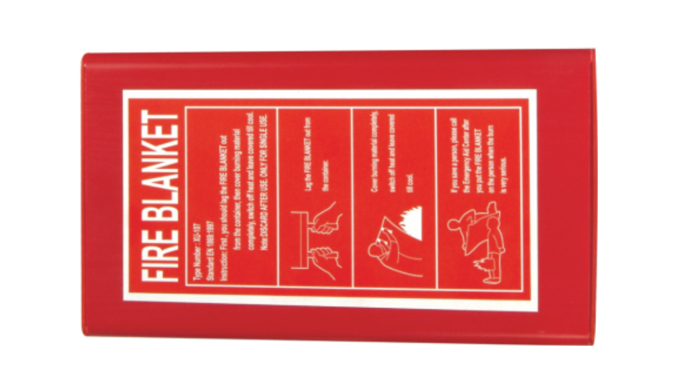Cover the fire source and block the air to achieve the […]
Cover the fire source and block the air to achieve the purpose of extinguishing fire.
Main places of use:
Fire blankets are mainly used as a simple initial fire extinguishing tool for enterprises, shopping malls, ships, automobiles, and civil buildings. It is especially suitable for the kitchens of families and restaurants, hotels, entertainment venues, gas stations and other places prone to fire. To prevent the spread of fire and protect escape.
The fire blanket is made of fibrous heat-insulating refractory refractory fiber. Refractory fiber has the characteristics of general fiber, such as softness, elasticity, and certain tensile strength. It can be further processed into various products such as paper, thread, rope, belt, blanket and felt; it also has the characteristics that general fiber does not have. High temperature resistance and corrosion resistance. As a refractory and thermal insulation material, it has been widely used in metallurgy, chemical industry, machinery, building materials, shipbuilding, aviation, aerospace and other industrial sectors.
Material classification
Refractory fibers are divided into two categories: amorphous (glassy) and polycrystalline (crystalline). Amorphous refractory fibers include aluminum silicate, high-purity aluminum silicate, chromium-containing aluminum silicate, and high-alumina refractory fibers. Polycrystalline refractory fibers, including mullite fibers, alumina fibers and zirconia fibers. (Table 1) There are also classifications according to the maximum allowable use temperature of refractory fibers.
Material classification characteristics
Refractory fiber is also a good infrared radiation material, with good thermal capacity and infrared heating effect. Using refractory fiber products can effectively save energy and is an ideal energy-saving and efficiency-enhancing material. Production practice has proved that the application of refractory fiber to continuous heating industrial furnace can save energy by more than 15%, and it can save energy by more than 30% when used in intermittent industrial furnace. At the same time, it can increase productivity and improve product quality, and realize lighter and larger furnace structure. , The overall performance is good. The refractory fiber is soft and elastic, and it is also an ideal sealing material. Because of its insulation, noise reduction, oxidation resistance, oil and water resistance, and easy construction, it is widely used in metallurgy, building materials, petroleum, chemical, shipbuilding, power, aerospace and other fields.
Polycrystalline refractory fiber is a new type of high temperature insulation material developed after amorphous refractory fiber in the early 1970s. It is mainly used in high temperature kilns with working temperature higher than 1400 ℃, which can save energy by 25% to 40%. Polycrystalline refractory fibers can also be used as composite reinforcement materials and catalyst carriers, with good application effects. Polycrystalline refractory fibers can also be used in the fields of aerospace missiles and atomic energy. At present, the polycrystalline refractory fibers that have been industrially produced and applied in the world mainly include polycrystalline alumina fibers (Al2O380%~90%, SiO221%-20%), polycrystalline mullite fibers (Al2O372%~79%, SiO221% ~28%) and polycrystalline zirconia fiber (ZrO292%, Y2O38%), etc.

NINGBO JIANMEI SPECIAL HOSE CO., LTD.